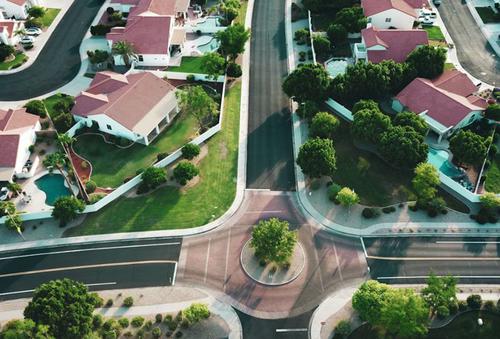MarketLens
The Rise of Space Junk Cleanup Technologies and Investment Opportunities
Introduction
The proliferation of space debris, often referred to as “space junk,” has become a critical issue for the sustainability of space activities. With over 23,000 pieces of debris larger than 10 cm currently orbiting Earth, the risk to operational satellites and space missions is significant. This report delves into the emerging technologies aimed at mitigating space debris and explores the investment opportunities within this burgeoning sector. The analysis is based on recent data and developments up to June 2024, providing a comprehensive overview of the current state and future prospects of space junk cleanup technologies.
The Growing Problem of Space Debris
The Scale of the Issue
Space debris includes defunct satellites, spent rocket stages, and fragments from disintegration, collisions, and other incidents. According to NASA, the number of debris pieces larger than 10 cm has surpassed 23,000, while millions of smaller fragments also pose substantial risks. The increasing number of satellite launches, particularly small satellites, exacerbates the problem. Between 2016 and 2020, around 1,900 small satellites were launched, significantly contributing to the debris population.
Risks and Consequences
The presence of space debris poses multiple risks, including collisions with operational satellites, which can lead to catastrophic damage or loss of functionality. For instance, a collision with a piece of debris as small as 1 cm can generate enough force to disable a satellite. The economic implications are profound, with potential losses in satellite infrastructure, communication, navigation, and weather forecasting services. Moreover, the safety of manned missions is jeopardized, necessitating urgent and effective solutions.
Emerging Technologies for Space Debris Mitigation
Laser-Based Solutions
NASA’s recent analysis highlights the potential of high-powered, ground-based lasers to mitigate space debris. These lasers can alter the orbit of debris larger than 10 cm by ablating or vaporizing part of its surface, creating thrust and changing its trajectory. This method, known as “laser nudging,” is considered cost-effective, with an estimated total cost of $360 million to $1.1 billion for all intact debris pieces, and an annual operating cost of $15-50 million. While the technology is still untested, it offers a promising alternative to complete debris removal.
Robotic and Active Debris Removal
Robotic systems and active debris removal (ADR) technologies are also gaining traction. Companies like Astroscale, ClearSpace, and Spaceway are developing robotic arms, nets, and harpoons to capture and deorbit debris. Astroscale’s ADRAS-J mission, part of the Commercial Removal of Debris Demonstration (CRD2) project with JAXA, exemplifies these efforts. The mission aims to demonstrate the feasibility of capturing and removing debris, fostering commercial endeavors in space debris mitigation.
Deorbit Motors and Propulsion Systems
The Aerospace Corporation has developed a Deorbit Motor designed to lower the orbit of satellites quickly and effectively, enabling responsible deorbiting once missions are completed. This technology is crucial for higher altitudes where atmospheric drag is insufficient. Successful static and flight tests have validated the motor’s capability, marking a significant advancement in space debris mitigation.
Market Dynamics and Investment Opportunities
Market Growth and Projections
The space debris monitoring and removal market is poised for substantial growth. According to a report by Verified Market Reports, the market is expected to reach a value of around $4.27 billion by 2027, growing at a CAGR of approximately 13.5% from 2021 to 2027. Another report projects a compound annual growth rate (CAGR) of 40.8% from 2024 to 2028, reaching a market value of $0.4 billion by 2028. These projections underscore the increasing demand for space debris mitigation solutions driven by the rising number of satellite launches and heightened awareness of space debris risks.
Key Players and Technological Innovations
Several key players are leading the charge in space debris mitigation. Companies like Astroscale Holdings Inc., ClearSpace SA, D-Orbit SRL, and RemoveDebris Ltd. are at the forefront of developing innovative technologies. These companies are focusing on research and development, collaborations, and partnerships to strengthen their market position. For instance, Astroscale’s recent IPO on the Tokyo Stock Exchange, which valued the company at $1 billion, highlights investor confidence in the sector.
Investment Opportunities
The growing market for space debris removal presents lucrative investment opportunities. Investors can capitalize on the advancements in laser-based solutions, robotic systems, and deorbit motors. The increasing number of satellites in low Earth orbit (LEO), medium Earth orbit (MEO), and geostationary orbit (GEO) further drives the demand for debris mitigation technologies. Additionally, government regulations and international guidelines aimed at managing space debris create a favorable environment for investment.
Economic and Policy Considerations
Cost-Benefit Analysis
Investing in space debris cleanup offers substantial economic benefits. The costs associated with debris removal technologies, though significant, are outweighed by the potential savings from preventing collisions and protecting satellite infrastructure. For example, NASA’s analysis estimates the cost of laser-nudging all intact debris pieces at $360 million to $1.1 billion, with annual operating costs of $15-50 million. In contrast, the cost of developing and deploying a single debris removal mission can range from $100 million to $500 million. These investments can save satellite operators from incurring damages, lost operating time, or replacement costs.
Regulatory Frameworks
Various international organizations and governments have implemented regulations and guidelines to manage space debris. The United Nations General Assembly’s 2018 resolution on reducing space debris encourages states to take measures to prevent the creation of new debris and mitigate existing risks. Additionally, ESA’s CleanCube campaign aims to engage CubeSat and New Space companies in developing innovative concepts for addressing Zero Debris challenges. Adhering to these guidelines is essential for future missions and activities, aligning with evolving policies and market demands.
Future Prospects and Challenges
Technological Advancements
The future of space debris removal technologies lies in continuous innovation and development. Companies are exploring advanced robotic systems, improved spacecraft design, and propulsion systems for deorbiting. For instance, GMV is developing new robotic technologies to remove space debris and refuel spacecraft, showcasing the potential for growth and impact in the coming years. These advancements will drive the market forward, offering new solutions to the space debris problem.
Challenges and Barriers
Despite the promising prospects, several challenges remain. The high cost associated with the development and deployment of debris removal technologies is a significant barrier. Additionally, technical difficulties in capturing and deorbiting debris, especially smaller fragments, pose challenges. International collaboration and regulations are crucial to address these issues, with guidelines for responsible satellite deployment, debris mitigation practices, and consequences for non-compliance.
Conclusion
The rise of space junk cleanup technologies marks a pivotal moment in the sustainability of space activities. With the increasing number of satellites and the growing awareness of space debris risks, the demand for effective mitigation solutions is higher than ever. Emerging technologies, such as laser-based solutions, robotic systems, and deorbit motors, offer promising avenues for addressing the space debris problem. The market for space debris removal is poised for substantial growth, presenting lucrative investment opportunities. However, overcoming the challenges of high costs and technical difficulties requires continuous innovation, international collaboration, and adherence to regulatory frameworks. As we look to the future, investing in space junk cleanup technologies is not only a prudent economic decision but also a crucial step towards ensuring the long-term sustainability of space activities.
Related Articles
The Rise of Prediction Markets
Category
You may also like
No related articles available
Breaking News
View All →No topics available at the moment






